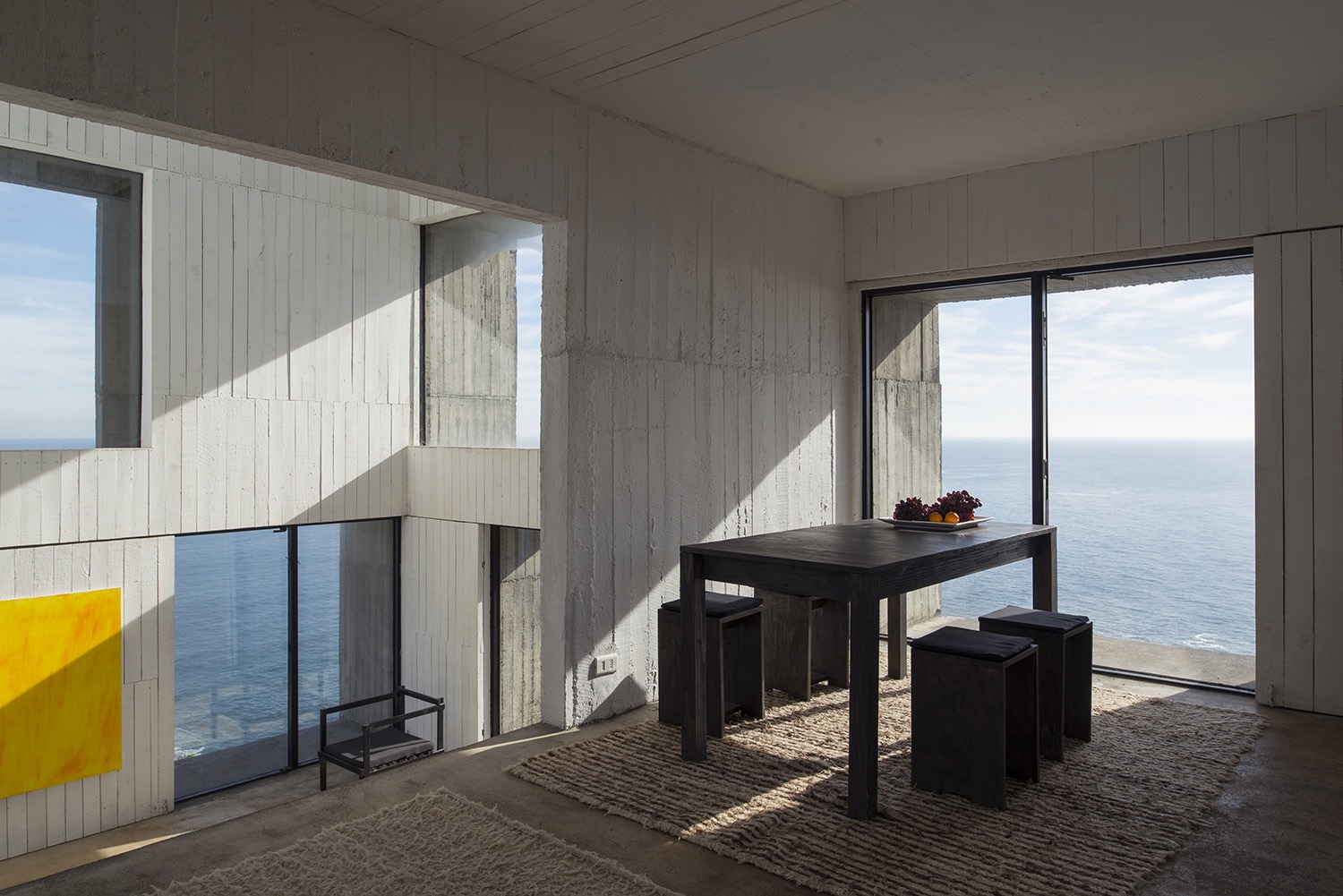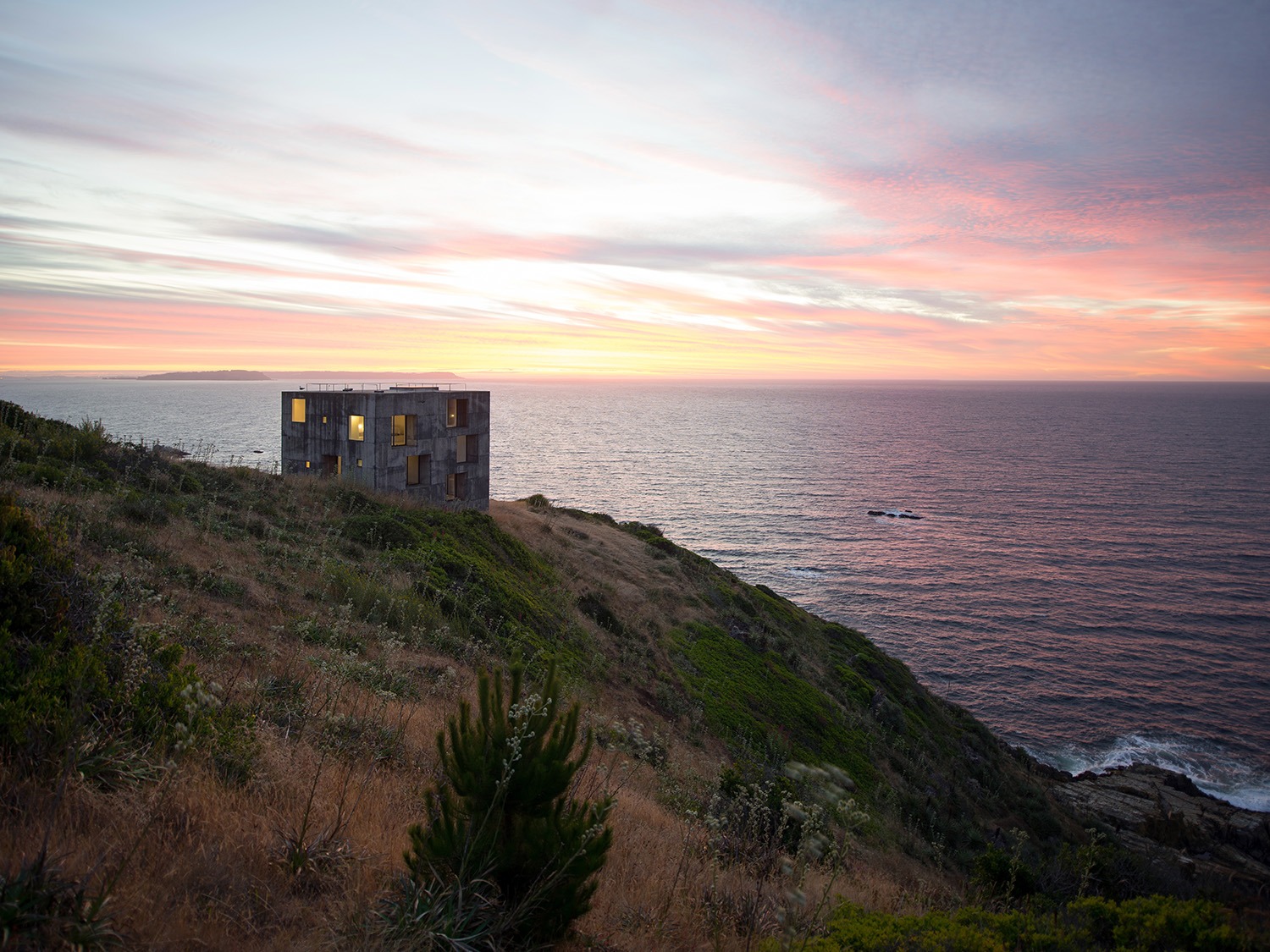
Casa Poli
On the Verge of Plunging into the Blue Yonder
In the midst of a thought-provoking conversation, with the magnificent spectacle of the city stretching out before me, everything that I see and hear seems to take on a special significance—even the thick fog that envelops most of the southern Chilean coastal city of Concepción, some forty kilometres from our destination.
After several months of trying to coordinate the get-together that would lead to my visit to Casa Poli, I meet up with its architects Mauricio Pezo and Sofía Von Ellrichshausen at Casa Cien, where they live and work.


The idea behind the project was a joint one by Mauricio and Sofia and their close artist friends Eduardo Meissner and his wife Rosemari Prim, when, by chance, in 2005 the opportunity came up to buy this unique plot of land. “We were very young and lacking in money and experience, but we couldn’t miss out on the opportunity,” says Sofía. And this was how they embarked on planning a new approach to inhabiting spaces in a dialogue-based, rather experimental process.
To transform their dream into a reality, they came up with both a format and a programme, deciding to design a home and a cultural centre to share this experience with more people. The name Poli “not only refers to the political role of a public works project but also to a basic category of plurality and multiplicity.” Together they created a refuge, a retreat and a forum for artists: an outstanding backdrop for thought and creation, looking out over the immensity of the Pacific Ocean.

The house is almost surrealistically situated. It is perched directly on the rock on top of a peninsula, surrounded by cliffs and birds, set against an endless stretch of wild countryside. Inside, the only impression you have is air. The building seems to be floating or levitating over the sea, while outside it appears to be a prolongation of the rocky terrain rising up from the earth.

Taking the poetics of the landscape as its basis, the centre offers a regular artist-in-residence programme for Chilean and foreign artists, encouraging experimental artwork relating to both the region and to the rest of the world. In this setting, the artists work in close connection with the place itself and with the local community, carrying out multidisciplinary and collaborative projects with biologists, oceanographers, geologists, anthropologists, architects and visual artists. Individual retreats or shared experiences breathe life and movement into a region that identifies with the countryside and with the sea, harvesting all the resources it needs to survive from them. Meals and exhibitions are organized against the sublime backdrop of a setting sun in surroundings where nothing ever changes– even though, at Poli, nothing is ever the same.

As we gaze out toward the horizon or watch the pasturelands’ swaying grass in its constant state of rebellion against the wind, we are reminded that although we are in the midst of nature, we are also protected, inhabiting a specific form or something like the abstraction of a space. With the house’s bare white unadorned walls and the contrast between inside and out, humans are placed in a kind of limbo, leading to a more receptive, attentive–and why not say it–creative mental state.


With the passage of the years, the house has gradually started to imitate the landscape and, with nothing to protect it from the adverse weather, its walls have acquired a subtle living presence in the form of lichen and moss, while seagulls and cormorants have started to colonize and adopt it.
Casa Poli pays tribute to the surrounding landscape, offering a space for reflection, contemplation, work, seclusion and get-togethers. It constantly puts us to the test, confronted with this extreme southern region, prompting us to stay alert, almost on the verge of plunging into the blue yonder.





